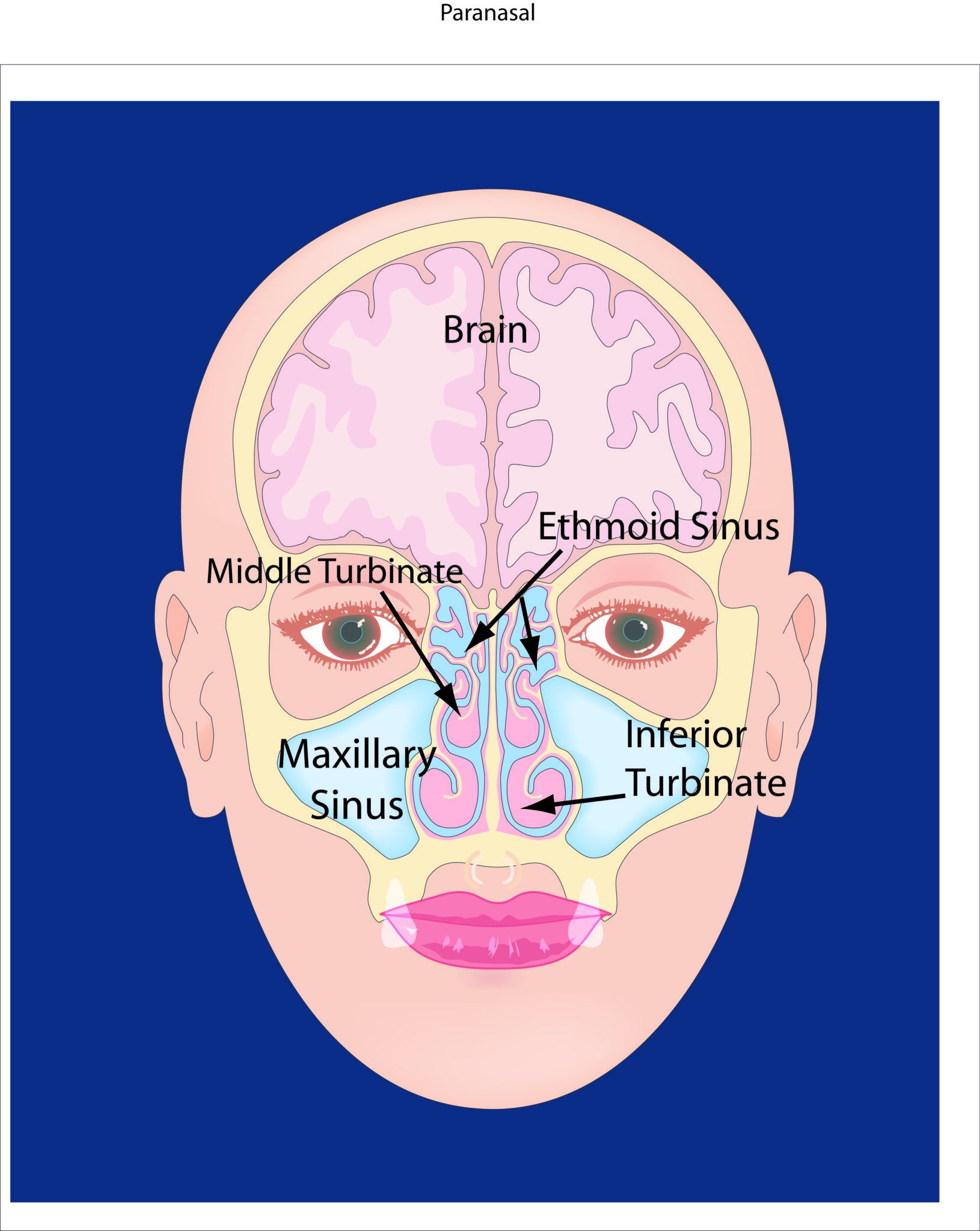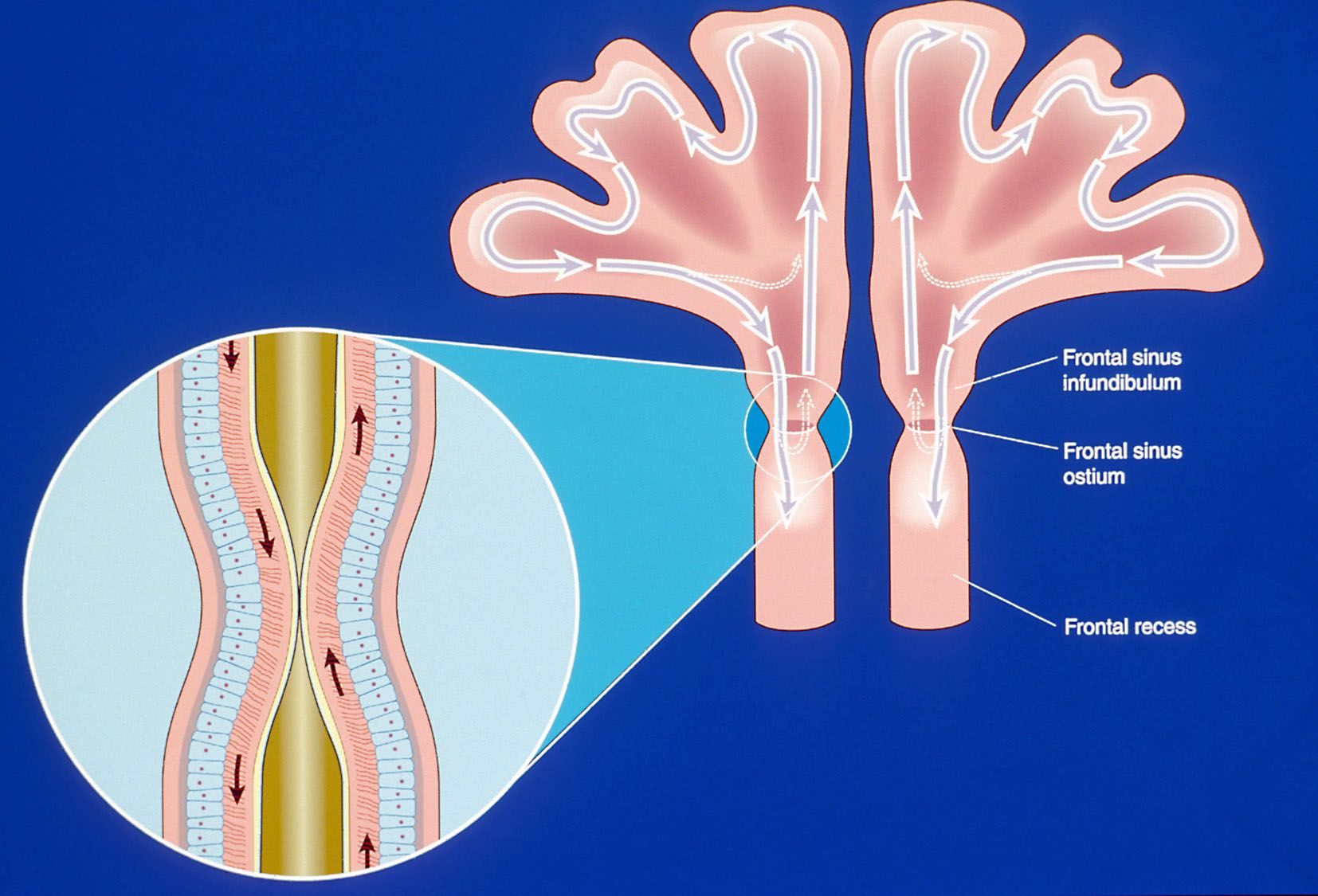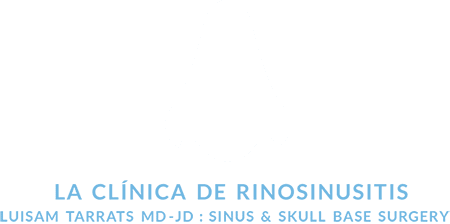About Your Sinus & Nasal Passages

Nasal & Sinus Anatomy
The nose, nasal passages and the paranasal sinuses are important structures with many functions associated with comfort of breathing, protection from foreign substance, and sense of smell. The nose and nasal cavity are divided into two sides by a midline wall, called the septum. The septum is composed of bone and cartilage that is covered by a mucus producing membrane called the mucosa. Each nostrils open into a nasal passage has the septum towards the center and has side wall boney projections called turbinates. Varying sized air containing chambers some of which resemble a honeycomb are situated behind the bones of the face are called the paranasal sinuses. These sinuses drain into the nasal passages. The roof of the paranasal sinuses is adjacent to skull base and their side walls are next to orbits (where the eyes reside). Five pairs of sinuses and three pairs of turbinates are typically present.
The five pairs of sinuses are named the:
- Maxillary sinuses (in our cheeks below our eyes)
- Anterior ethmoid sinuses ( a honeycomb of small chambers between our eyes and below the skull base brain)
- Posterior ethmoid sinuses ( honeycomb of sinuses just behind the anterior ethmoid sinuses)
- Frontal sinuses in the forehead region
- Sphenoid sinuses (anterior to pituitary gland and brainstem)
The paranasal sinuses connect with the nasal cavity via narrow openings called ostia that drain through channels adjacent to the turbinates. Air and mucus enter and exit to and from the sinus through these openings.
The turbinates are called the:
- Inferior turbinates – our tear ducts opens underneath this turbinate
- Middle turbinate – the frontal, anterior ethmoid, and maxillary sinuses drain adjacent to this
- Superior turbinate – lies just in front of the sphenoid sinus and the majority of our sense of smell fibers reside on it.
- Supreme turbinate – Occasionally these structures are present and are situated immediately behind the superior turbinates

“The Mucociliary Blanket”
Each of the turbinates and sinuses are also covered by mucosa. The mucosa of the nasal passages and sinuses produces between ½ quart and up to 1 ½ quarts of mucus /day. It is drained from the sinuses by tiny hair-like structures called cilia that beat the mucous out of the sinuses into the nasal passages and down into our throat where is usually imperceptibly swallowed. This “mucociliary blanket” serves to filter our air of tiny particles which can contain infection and other irritants which are then digested by acid in our stomach. The mucus contains defensive proteins that help protect us from invasion by organisms. Additionally the moisture of the “mucus blanket” helps humidify the air that we breathe. This “mucus blanket” becomes noticeable when there is a lot of it (thin and watery) or when it becomes thick and dry. This is typically referred to as post-nasal drip. In addition to the mucus producing role of the mucosa, it is rich with blood vessels and nerve endings that serve many purposes that include our sense of smell and “sneeze reflex”.
Nasal & Sinus Functions
The nasal passages with all their elements (Turbinates & Sinuses) function in concert to improve our breathing as compared to breathing through our mouths. This is because they:
- Filter & cleanse the air by trapping inhaled particles in mucus which we swallow.
- Moisturize the air in dry climates so we do not have a dry throat.
- Warm or cool the inhaled air so that we are more comfortable with it in our “wind pipe” (trachea).
- Protect from infection via the production of immunoglobulins and toxic chemicals which diminish the frequency of infection from inhaled bacteria, molds and viruses.
- Enable sense of smell
- Enjoy the ocean
- Enhance taste
- Detect danger – smoke, chemical, spoiled food
- Improve the functioning of our lungs at rest.
- Interestingly, even though the nasal passages are much narrower than our mouths we find it more comfortable to breath through our nose in part because its narrowness helps our lungs inflate better when we are not exercising. Unfortunately, if the nasal passages are too narrow we sense the uncomfortable feeling of nasal blockage/stuffiness.Detect irritants and expel them via a sneeze reflex.
In addition to their mucus producing function, the paranasal sinuses appear to serve additional benefit: They are thought to help us by:
- Acting as a cushion in trauma to protect the brain and eye.
- Voice resonance improvement.
- Lightening the weight of the head, so that in evolutionary terms humans could stand upright/erect.










